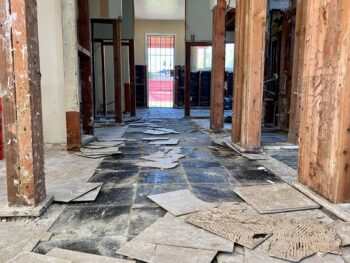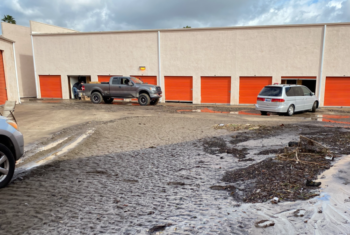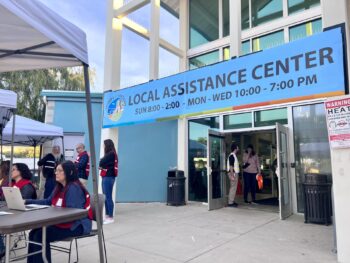The County of San Diego and the U.S. Environmental Protection Agency (EPA) presented Baja California officials Thursday with $53,000 worth of “hazmat” suits and other equipment as part of a federally-funded plan to improve emergency response capabilities on both sides of the U.S. – Mexico border.
“We all know that emergencies, including hazardous waste spills, don’t observe borders,” said County Supervisor Greg Cox. “The transfer of this equipment and our continuing training program will help make us all safer by ensuring that responders on both sides of our border know and use the same equipment, procedures and training.”
The equipment — a decontamination tent, chemical protection suits, “PAPR” Powered Air Purifying Respirator breathing masks; mercury spill kits; high-tech, hand-held, photo-ionization gas meters; non-sparking safety shovels and other items — was paid for by a federal grant from the Environmental Protection Agency Border 2012 program. DEH and Baja applied jointly for the grant in 2009, and DEH purchased the equipment for Baja with the approval of the San Diego County Board of Supervisors.
Baja California Undersecretary General Gustavo Ley Ruiz formally accepted the equipment at Thursday’s event.
The Border 2012 program was signed by the U.S. and Mexico in 2003, with the overarching goal of protecting the environment and citizens living along the 2,000 mile U.S. Mexico border, including dealing with the increasing risks of hazardous materials spills fueled by population growth. The program has its roots in the La Paz Agreement signed in 1983 by President Ronald Reagan.
San Diego County environmental health personnel have trained more than 120 Mexican emergency responders over the last three years, including three who have become certified hazmat instructors.
An EPA report released last year stated that over 40 percent of the entire U.S. – Mexico border population lives in the California-Baja California region, which includes the major border cities of San Diego, Tijuana and Mexicali. The report also stated that several of the 34 border facilities that were permitted to handle hazardous waste along the U.S. – Mexico border (19 in the U.S., 15 in Mexico) were clustered in the San Diego County/Tijuana area.




